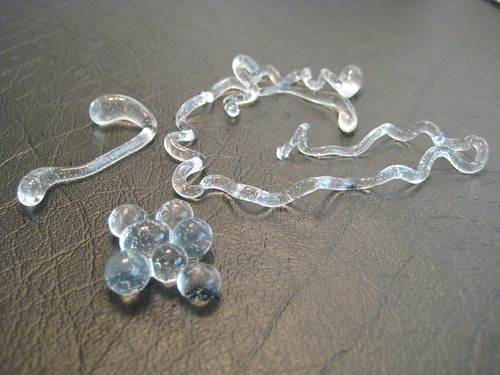
In preparation for tomorrow's Memento Meal potluck, I ordered a pound each of Sodium Alginate and Calcium Chloride from Le Sanctuaire.
By creating a 2% solution of Calcium Chloride in water, and a 1% solution of Sodium Alginate in water, and dripping, squirting, and dunking some of the latter into the former, I was able to create spheres and noodles and all sorts of odd little shapes that have a gelled exterior but a liquid center. When the two chemicals come in contact, the Calcium replaces Sodium in the alginate, resulting in a gel. (The chemistry is described much better by Khymos.)
This technique differs in that way from the previous method I played with using agar agar powder, which solidified all the way through. This technique leave the center filled with liquid that hasn't touched the Calcium Chloride, so the shapes will break open on the tongue, releasing the liquid. If that liquid is flavored, then a burst of flavor comes out.
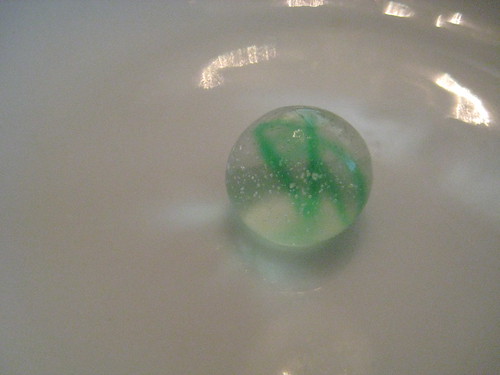
It took some adjusting to get both the molality and the consistency of the solution correct, but once it was I was able to play around a lot. After making lots of little balls, I wondered if I could dye a little bit of the Calcium Chloride and inject it into the liquid center using a 1/2 CC hypodermic needle, creating solid shapes inside the liquid center. I tinted some of the solution green, and then injected it. It reacts so quickly that it creeps along the needle, creating little spiraling strips through the center, and looked a lot like marbles I used to play with as a kid.
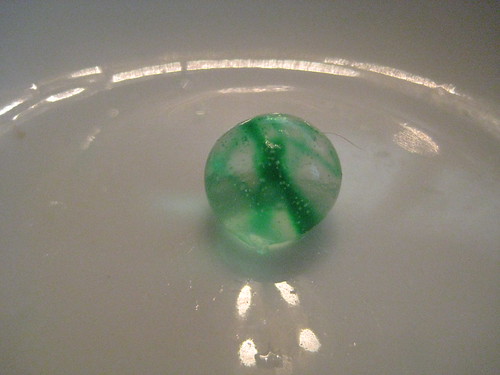
I also got curious what types of liquids could be added. I had read that acids and anything with Chloride ions would cause trouble by throwing off the chemical reaction, but didn't read anything about not being able to use alcohol. I grabbed a bottle of blue Curacao, and mixed it with a bit of my alginate solution, and was able to create spheres of the liquor that burst open in your mouth - like tiny jello shots with a liquid center.
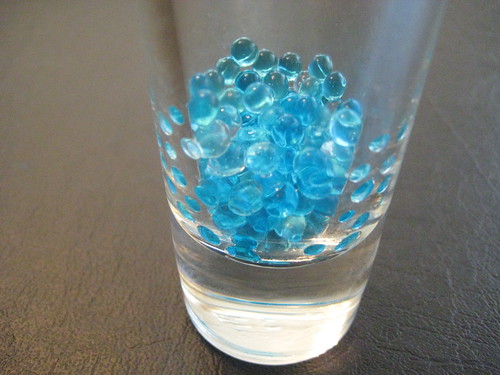
Of course, I wondered if you could create a whole shot this way, filled with orbs, so I made a bunch of the blue Curacao spheres, then made some Bacardi light rum spheres, and put them together. I added a little water, and found that since I had whipped the light rum mixture more, it had air bubbles that caused those spheres to float a bit, whereas the Curacao spheres sank to the bottom of the glass.
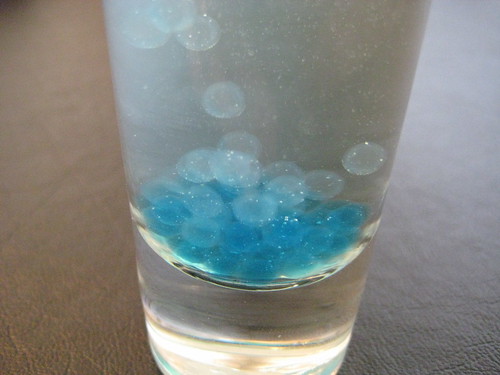
I can't wait to play more! Some key things I learned this round were:
* My scale only measures to the gram, so when it showed 4 grams, it could be anywhere from 3.5 to 4.5 grams - which isn't quite accurate enough for creating specific molality solutions.
* 2% alginate is too much, creating a thick gel, not a liquid, but by creating a 2% solution, you can add liquids to it to thin it out to the right consistency.
* Despite all the precision, it's all pretty flexible and forgiving - except the consistency. If your solution is too thick, you'll get teardrops, not spheres, because the liquid won't become a sphere while it falls.
* You can use and reuse the Calcium Chloride solution.
* Calcium Chloride dissolves readily in water, but Sodium Alginate clumps and even whisking it doesn't help. I tried a hot water bath, but that didn't do the trick, so I resorted to blending it up, which created lots of air in the mixture. Air's okay - it doesn't seem to impede the chemical reaction - but you'll have little bubbles in the finished shapes. If you let it sit for a few hours, though, the air bubble work their way out.
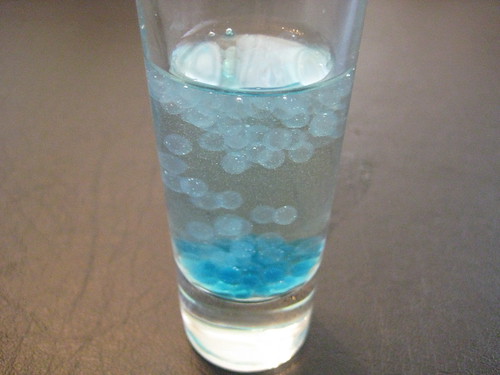






No comments:
Post a Comment